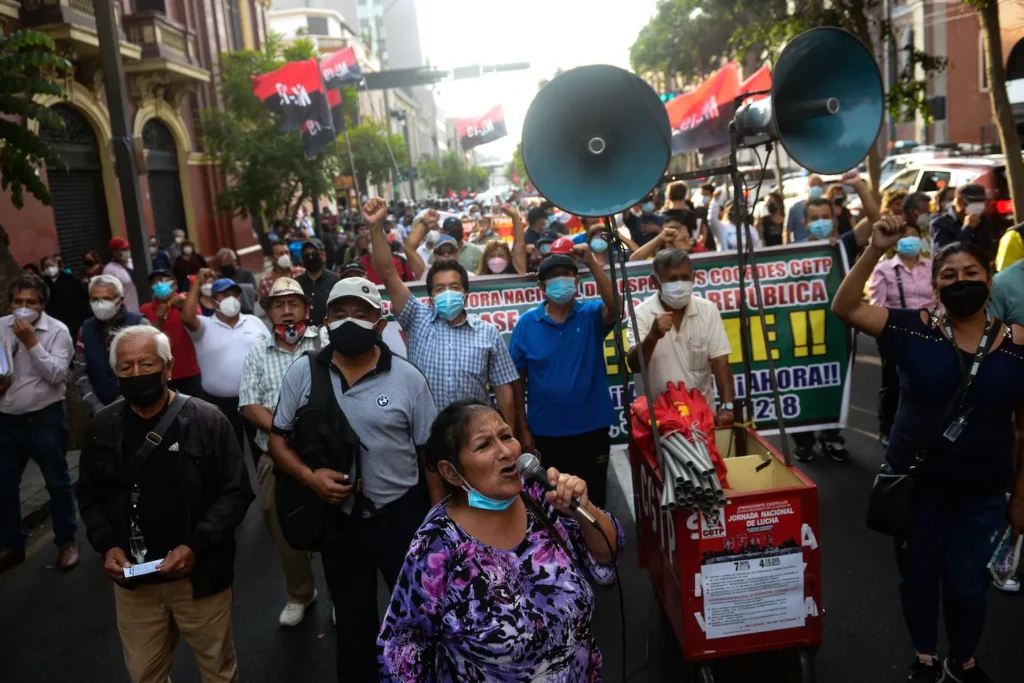
1. What’s triggered the worry?
A post-pandemic surge of inflation is a recipe for strain in countries that need US dollars for energy, medicine and food imports. Food costs account for about 40% of consumer spending in places like sub-Saharan Africa, more than double the share in advanced economies. To tame higher prices, the US Federal Reserve is embarking on its most aggressive series of interest-rate increases in two decades, which helps drive up the dollar and push down other currencies. So debt-servicing costs are jumping — just after developing nations borrowed billions in foreign currencies to fight Covid-19.
2. Did the pandemic cause this?
The health crisis certainly created a backdrop of social tensions, which is one reason economists are starting to suspect a broader trend in the upheaval hitting some of the poorest corners of the globe. Peru, which had one of the world’s highest Covid death rates, was rocked by weeks of violence in March and April as farmers and truckers protested the rising cost of fuel and fertilizers.
The current dynamic can trigger fits of panic among international investors and sudden flights of capital from the countries most exposed. That’s places like Egypt, the world’s largest wheat importer and one of the IMF’s biggest borrowers in recent years. After Russia’s invasion of Ukraine sent global commodity prices surging, the country’s central bank let the Egyptian pound weaken more than 15% in a matter of hours and hiked the benchmark interest rate for the first time in five years amid an outflow of hard currency.
4. Where else is trouble brewing?
Sri Lanka is seen as a prime example of how shortages of food and fuel can spill over into violent street protests and destabilize an unpopular government. The South Asian nation defaulted on its foreign debt in May for the first time since achieving independence from Britain in 1948. A handful of other nations, including Pakistan, Tunisia, Ethiopia, Ghana and El Salvador were in danger of following suit, according to Bloomberg Economics. As of mid-May about a dozen emerging-market countries had government bonds trading with yields at least 10 percentage points more than US Treasuries, a benchmark of distress. That compared with six a year earlier. While the direct effect of a string of defaults on the global economy would be small, blowups in the developing world have a history of spreading well beyond their starting points. That’s what happened in 1997, when a currency devaluation in Thailand touched off a broader Asian crisis and ultimately led to Russia’s default on its local debt.
In some ways, the spike in global commodities prices has been a boon for resource-rich regions like Latin America. Exports of beef and copper rose quickly in places such as Brazil and Chile. But with much of the region’s fuel and fertilizers imported, the worry is that higher prices can still feed off of each other. In Brazil, where tensions are running high ahead of an election in October, President Jair Bolsonaro’s government used the commodities windfall to expand aid to the poor after a spike in gasoline prices helped push inflation past 12% in April.
6. What’s the response?
The World Bank mobilized a $170 billion crisis-response package in April, more than the $157 billion spent for its initial Covid-19 response. More countries entered rescue talks with the IMF. And while many wealthy nations gave developing countries a pass on making debt repayments while they dealt with the virus, there has been slow progress on a plan to help debt-ridden nations restructure what they owe. A collective $35 billion bill is coming due this year. The clock is ticking: Oxfam International, a charity group, warned that the impact of Covid-19 and surging food prices are set to send more than a quarter of a million people into extreme poverty this year.
More stories like this are available on bloomberg.com

